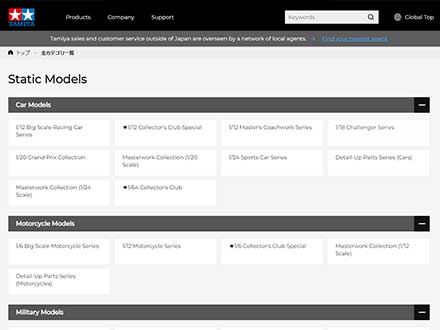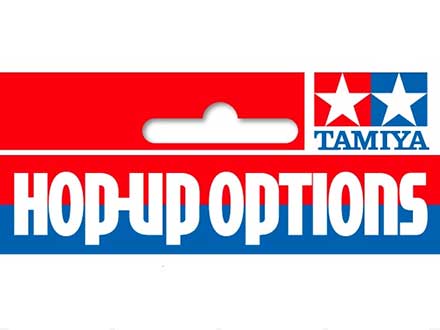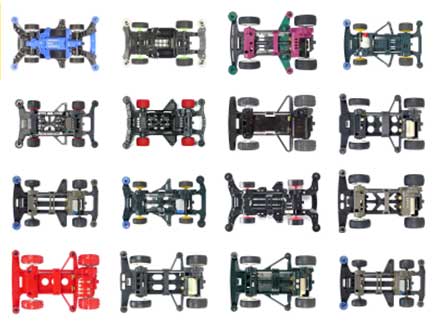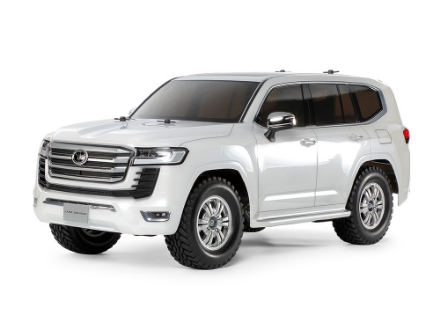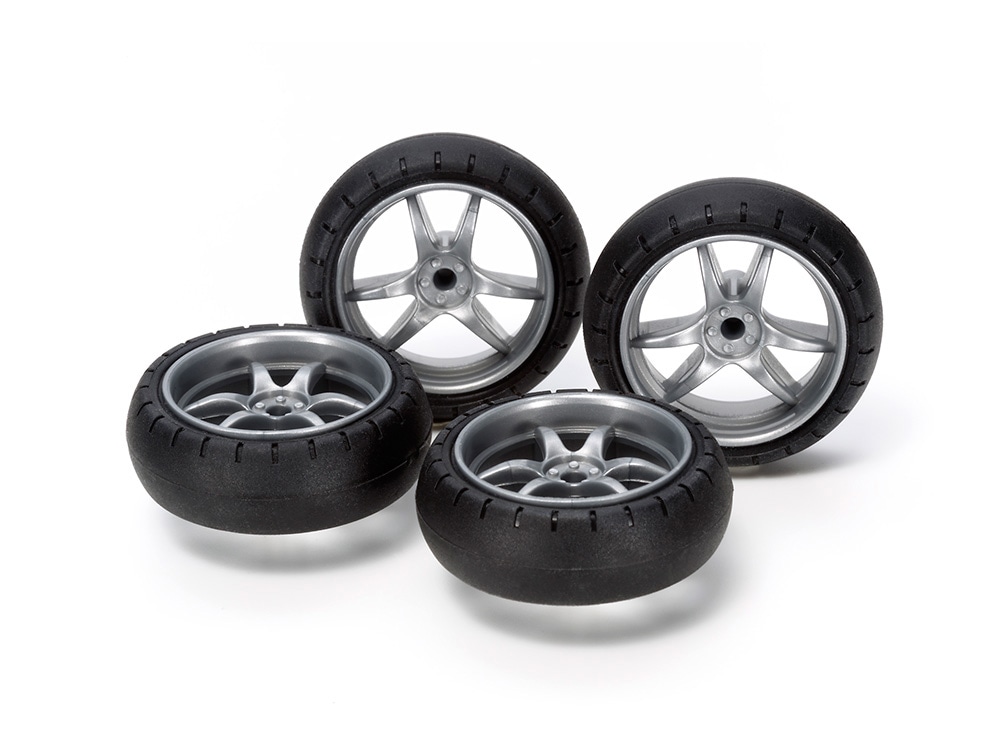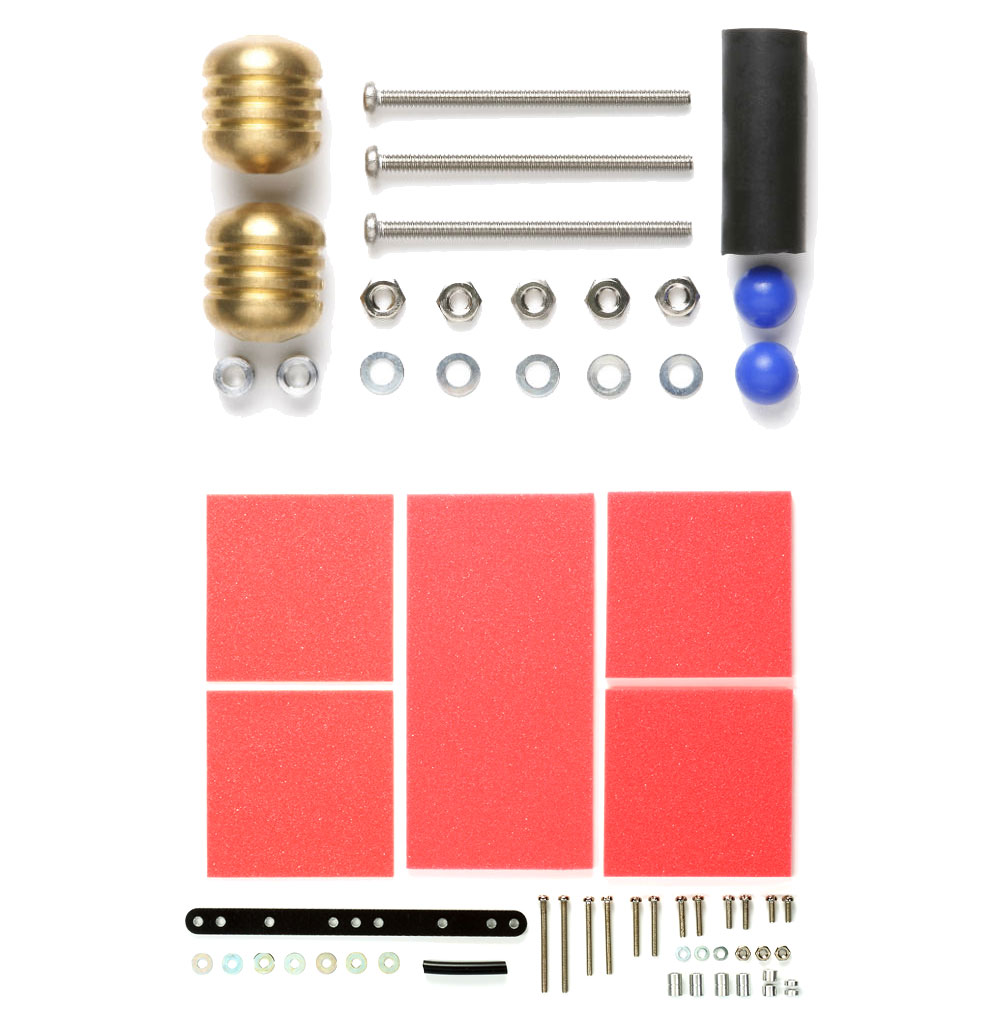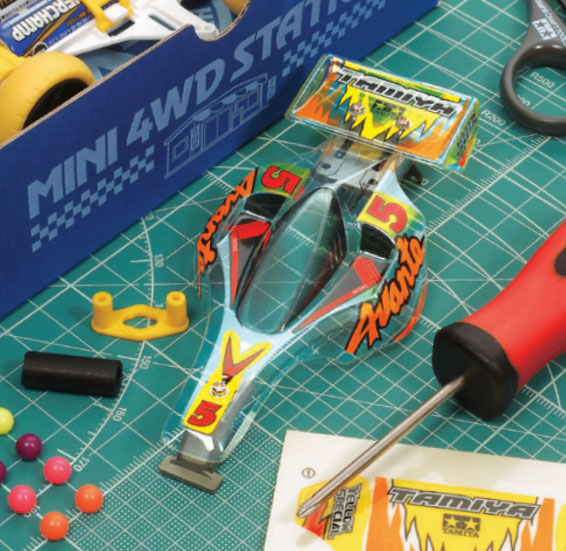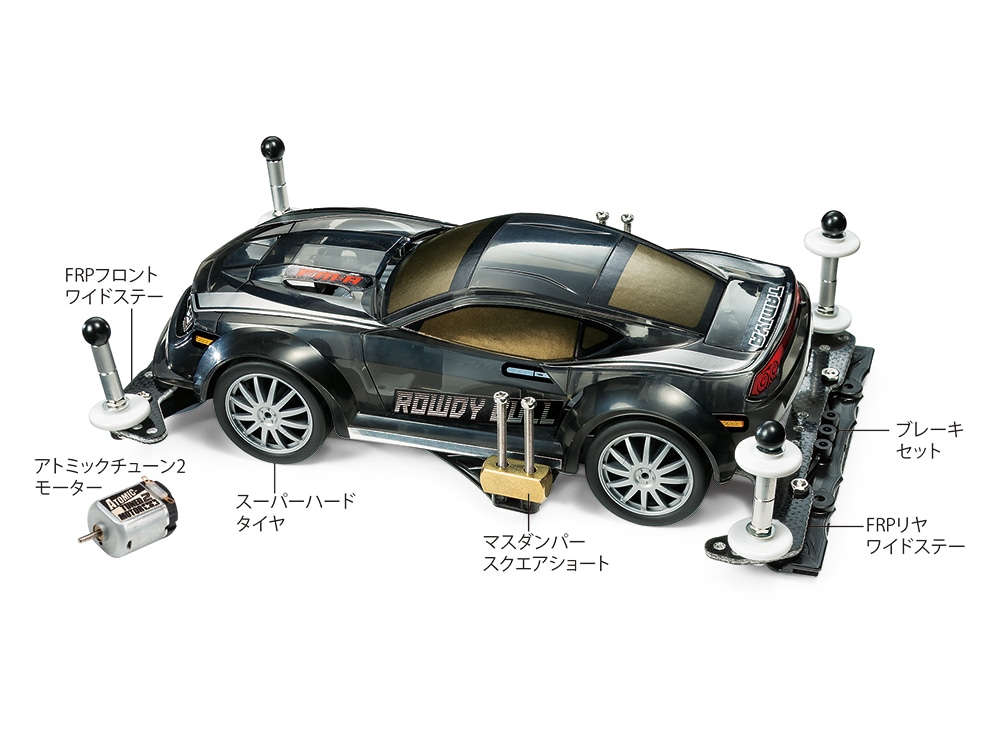Mini 4WD Setup Guide
Recommended viewing for first-time builders
Let’s build the Mini 4WD MA chassis!
This YouTube video gives an in-depth, start-to-finish guide to building the MA chassis, including tips on how to use basic tools like side cutters and screwdrivers.
Advice on tuning your chassis and using Grade-Up parts
MA Chassis (Part 1) | MA Chassis (Part 2) | AR Chassis | MS Chassis
A run-down on key setup points
These YouTube videos give a category-by-category introduction to key setup points.
Get the motor right
Motors can be broadly categorized as high-torque, high-RPM or balanced, and your choice can have a big effect upon how your car runs: high-torque motors suit twisting, undulating circuits, while high-RPM motors are great for circuits with multiple long straights. Take a good look at the course before deciding, and don't forget to fit Grade-Up Parts to account for improved motor performance!
Gear up for success
Motors provide major changes; use gears to fine-tune your setup, for example adding a touch more acceleration to a high-RPM motor car, or adding top speed to a high-torque motor car.
Wheel/tire size is important too
Smaller diameter ones will favor acceleration while larger ones boost top speed.
Play it nice and smooth
Keeping your rollers, gears and bearings, etc. rotating smoothly and freely is a key to quick cornering and good times. Apply grease and oil to them (not too much!) as shown in the instruction manual, taking care to remove any dust or dirt first.
Get on a real roll with ball bearings
Superior rotation and minimal speed loss are available. Ball bearings are available for many sections of your car including gears, axles and are even built into some rollers!
What tires will you choose?
Soft tires mean more grip, and hard tires less; however, in Mini 4WD as the cars have rollers to help them turn, less grippy hard tires actually translate to more corner speed. Choosing soft tires for stable, slower corners, or hard ones for swift turns can make all the difference to your race!
Don't forget tire width
How wide a tire is affects the surface contact area, and consequently grip. Arched tires have very little contact area, for minimal speed loss in corners.
Adjust tread with care
Larger tread (overall distance between left and right wheels) means more grip in corners. You can adjust it with offset tread tires that allow different settings depending on how they are attached.
Brakes and mass dampers
Mini 4WD isn't all about speed, it requires finesse too! Too much speed can be a recipe for disaster in jump sections, sending your car off of the course. Brake sets include sponge that drags on the slope surface, slowing and stabilizing the car before it jumps. Mass dampers influence a car's landing, and their position/weight allows fine setup changes. Choose your brake sponge and mass damper types carefully to master the competition!
Nail the landing
Any time a car is airborne is time it could have spent accelerating! Mass dampers cannot completely eliminate bounce, especially when landing on slopes, but they can provide a big effect.
Study the course
In cases where a course has numerous jump sections of different types, prioritize which jump will save the most time if perfectly negotiated, and alter your car setup towards it.
The Mini 4WD diet?!
Many Mini 4WD racers favor lightweight cars, as this reduces motor stress and potentially boosts top speed. It also redistributes weight, altering the car's center of gravity; thus, it's better to lighten your car from the top down - why not start with the body? A number of lightweight clear bodies are available in the Grade-Up Parts line.
Variety is the spice of Mini 4WD life
It's worthwhile having a number of bodies with different centers of gravity (towards the front, rear, center, etc.) to ensure that your car can adapt to any course.
Rolling, rolling, rolling...
Rollers are a key player in getting your car smoothly through corners; which ones you use and where you place them can make all the difference. There are a huge number of roller options among our Grade-Up Parts, with different sizes, thicknesses and weights at your disposal.
Benefits of width
The wider your car is (remember, official Tamiya race rules in Japan limit total width including rollers to 105mm), the further inside the lane it will run on corners - this effectively makes the track shorter! It will also mean the car needs to turn tighter, though, so make sure your setup is up to it!
Get the right gear ratio
5:1, 3.5:1 – gear ratios are a common sight for a Mini 4WD fan. Many will already know that it shows how many times the motor turns for each rotation of a wheel – or put another way, how much motor power is needed to turn the wheel once. 5:1 is more powerful and gives better torque (for this, read acceleration), but 3.5:1 gives greater speed thanks to quicker wheel rotation. This principle is the same on a full-size car, with more powerful low and speedier high gears. Mini 4WD cars don’t have the luxury of transmissions, so you’ll have to decide: is top speed more important, or will turns and slopes stop your car from getting up to top speed, making acceleration more vital? This is one of the classic decisions facing a Mini 4WD racer.
■Top speed isn’t always everything?
The list in the PDF on this page shows which gear ratios can be used. Don’t forget, how that ratio plays with other grade-up parts is also important! Using a gear ratio AND a motor set up for top speed might backfire if the course doesn’t have enough long straights for the car to reach top speed, while such a course might be much better for a powerful ratio-motor combination with more torque and acceleration. Add in other factors such as your car weight and tire diameter, and there are plenty of variables in play! It certainly pays to have a range of gears on hand to fine-tune your car…
A great first step
So there you have it! The six sections above have hopefully given you an idea about the various tune-up options for your Mini 4WD car. It can all be a little daunting at first, so if you are just getting started why not go for one of our handy starter packs like Item 18710 Mini 4WD Starter Pack FM-A Balanced Spec (Rowdy Bull), pictured to the right? They combine a model kit with parts selected especially for novice tuners!
Make sure the parts will fit
From quintessential classic rear motor chassis to front motor layouts, and of course midship designs, there are plenty of different Mini 4WD chassis to choose from: it’s important to know that the Grade-Up Parts you’re buying are compatible with your car. The chassis guide at the link below has chassis rundowns and lists of compatible parts ready for you to browse!

